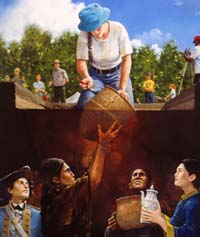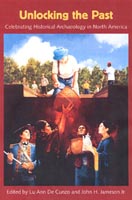The Shipwreck of La Salle's La Belle
By James Bruseth

In 1684, Robert Cavelier, Sieur de La Salle, had set sail from France with four ships. He had located the mouth of Mississippi River in 1682, and was coming back to build a colony there to hold for France what later became the Louisiana Territory. In January 1685, three of his ships, Le Joly, l'Aimable, and La Belle, sailed into the Gulf of Mexico and entered Matagorda Bay along the Texas coast. He anchored his vessels and set off with his men to explore inland. They were met by barren plains, mud flats, and reedy marshes, which hosted clouds of mosquitoes, deadly snakes, and unfamiliar diseases. The Karankawa Indians did not take kindly to La Salle's arrival; they voiced their displeasure by stealing his supplies and killing his men. When the surviving explorers returned to Matagorda Bay, their misery only deepened. La Belle had sunk during a violent winter storm in 1686. With the loss of La Belle, La Salle realized that failure for his colony was imminent. His men suffered from hunger and illness, and many deserted. He began an expedition toward New France, today's Canada, seeking aid from French settlers there. Before reaching his destination, one of his disaffected men shot him dead.
The archeologists working on La Belle had an incredible experience. A large, steel cofferdam was built around the wreck and the water pumped out. This enabled the crew to excavate in relatively dry conditions, much as is done on land archeological sites. Few archeologists have had the opportunity to work in a shipwreck with the waters held back by a steel-walled cofferdam. For many of the archeological team, this was undoubtedly the highlight of their careers.
When La Belle sank, large quantities of trade goods weighted down its hull, highlighting the great importance La Salle placed on interaction with Native Americans. He planned to trade for food and other goods to help his colony survive, and he also hoped to exchange trade items for furs and hides to send back to France and sell for profit. Other objects are giving great insights into what it took to establish a colony in the New World. Putting together the pieces from an archaeological time capsule like La Belle will take many years of patient work, and the expertise of many people.
James E. Bruseth is the Director of the Archaeology Division at the Texas Historical Commission.
